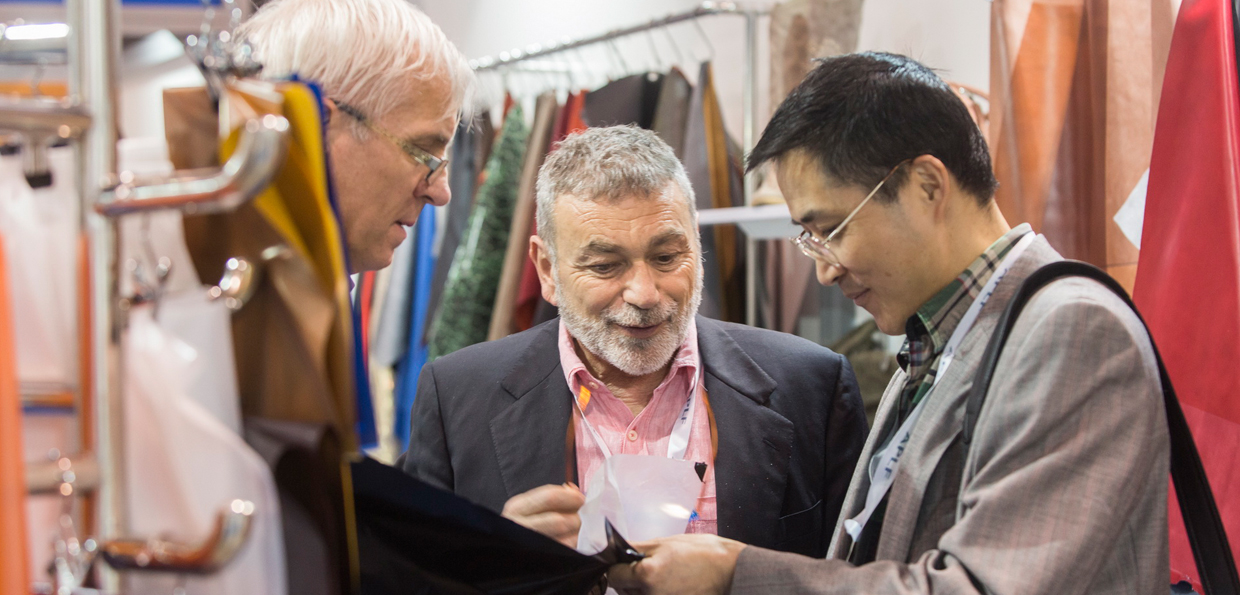Despite misgivings about the slowdown in demand for leather from China in the first two months of 2016, APLF got off to a brisk start and this continued into Day 2 of this major event.
The fact is that if China does not receive orders to manufacture subcontracted leather footwear from brands in developed countries then leather demand will be slack. But despite reduced demand, independent reports such as that from the World Leather’s Leather Pipeline indicate that APLF was generally regarded as a success.
The report states: “Nobody really expected to sell much leather during the show, but the majority of exhibitors were happy with the numbers of old and new customers passing by,” the author said.
“As far as visitors are concerned, the quality has generally gone up and people came with clear interest and intention; they knew what they were looking for and whom they needed to speak to.”
APLF continues to reflect the overall market and serves it as a business platform by being an integral part of the global leather industry.
Stable Prices
In recent weeks prices have indeed remained stable and even firmed up for top class selections and this can be attributed in part to fewer cattle being slaughtered and some abattoirs closing in Brazil and other smaller countries such as Colombia.
With still large stocks of lower grade materials to be moved from warehouses, this continues to blunt the demand for fresh orders and so Chinese manufacturers are buying what is strictly necessary and working from hand to mouth.
Demand for footwear leather has been weak for over a year and as one important tanner from South America stated: “Last year our tanneries were working at full capacity to fulfill orders required by brands to which we have been selling for over a decade. So far this year we have not received one order from the brands we work with.”
This sums up the leather footwear sector which will eventually recover but, on the other hand, tanneries that specialise in leather for automotive and furniture applications were much more satisfied with the market situation and somewhat busier during the three days of the fair. Automotive leather demand has been the main driver of leather demand for the last year as vehicle sales continue to be strong in China, Europe and the US and should continue so for the rest of 2016.
Thus, as in any trade fair there was a mix of exhibitor opinions but many were pleasantly surprised by the positive atmosphere and the movement of buyers as some had arrived in Hong Kong with low expectations.
Buyers and sellers appeared to be pulling in different directions with a gap of US$0.05 – 0.1 existing between them at the fair for top grade TR1 wet blue even though there were some reports of business being transacted at a lower level of US$1.15.
Turkey Responds as Focus Country
By lifting its image as Focus Country at APLF, Turkey aimed to compensate for the loss of the traditional and most important Russian market due to economic and political sanctions.
For this reason Turkey has turned its marketing and sales efforts to the USA, the Middle East and Europe with the ambitious objective of increasing exports of the sector from US$1.5 billion in 2015 to US$5.2 billion in 2023. China is also an interesting market to explore at this point in time.
As Ruken Mizraki, Board Member of the Istanbul Leather & Leather Products Exporters Association (IDMIB), which is instrumental in planning the future export strategy of Turkish leather and leather products, stated: “The fair is active and we have seen many customers from the sector but we expect the market to improve in 2017.”
Interestingly enough, on the day after APLF closed, the South China Morning Post reported a large rise in the Purchasing Managers Index (PMI) in China in March to 50.2 from just 49 in February. (Any figure over 50 indicates a rise in manufacturing activity).This could be the first sign of a pick-up in industrial manufacturing in China and a favourable sign for both the footwear and leather industry.
Other Expert Observations
Leading market commentator, Ron Sauer, summed up this APLF fair as follows: “Most people at APLF this week feel that the show is slightly quieter compared with previous editions reflecting a subdued market in Asia and across many parts of the world. The reasons are varied and complex with reduced demand from China and Russia, high retail inventories following mild winters and the ongoing substitution of leather with non-leather materials are all having an impact on the market.”
On the bright side newcomers to the fair from Zimbabwe had never seen so much interest in their leather. Chairman of the Zimbabwe Leather Development Council, Clement Shoko, said that they saw more interest and visitors in their leather on the first morning of APLF than they had done in the past year. This is an excellent example of the pulling power of APLF as a global event.
APLF serves the leather industry by being part of it, acting as a business platform that reflects market conditions. It fulfilled this role and allowed market participants to confirm the state of the market with opinions varying as to whether an increase in demand and leather footwear manufacturing will occur in the second half of this year or in 2017.
